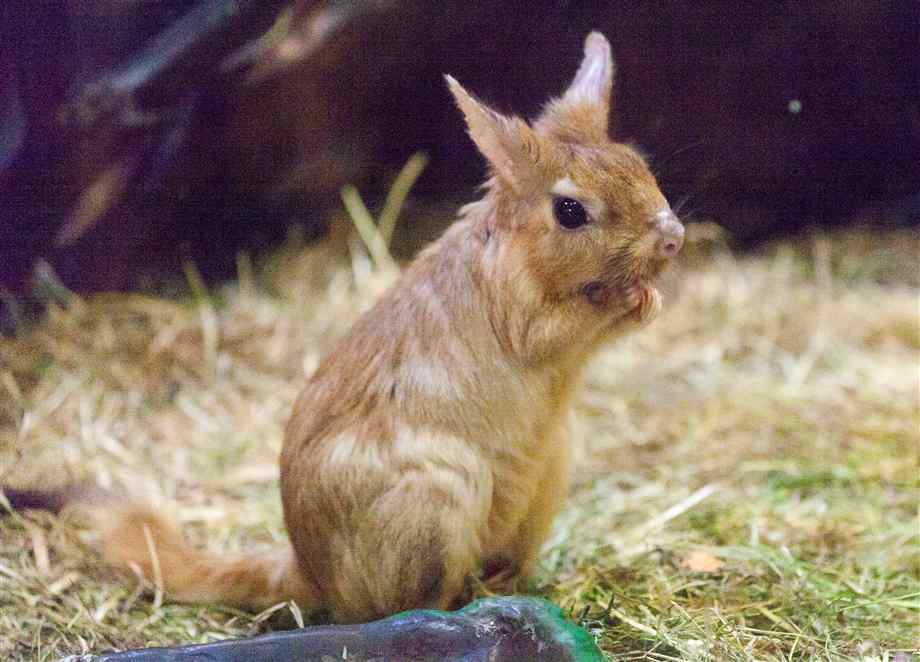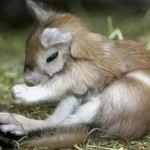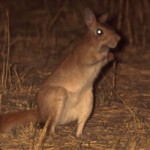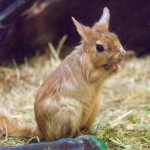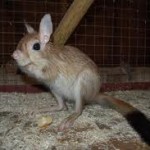Springhare Facts
Scientific Classification of Springhare: Pedetescapensis
Kingdom of Springhare: Animalia
Phylum of Springhare: Chordata
Class of Springhare: Mammalia
Order of Springhare: Rodentia
Family of Springhare: Peditidae
Genus of Springhare: Pedetes
Species of Springhare: P.Capensis
Springhare
The Springhare belongs to the category of Pedetus genus. These species essentially do not signify hares and originally come from the southern parts of Africa. These species are also called as Springhaas. We explore these queer mammals in detail in this article.
Picture of Springhare
Here we put a few choicest pictures to have a glimpse of the Mammalia class specie.
Some Interesting Facts about Springhare
- As suggested by their name, these species can cover a great distance. They have sensory organs so strong that they can sense the smallest of the vibrations very quickly.
- These species don’t drink water much rather. They rather collect the required moisture from the dew and rain.
- They form a favorite diet for the African Bushmen.
Range Of Springhare
These species are commonly found in Southern Africa, parts of Tanzania, Kenya and South western Africa.
Characteristics of Springhare
Size of Springhare: These species ranges from 14 – 19 inches in length. The tail is almost as large as the body with its size ranging from 14 – 19 inches.
Weight of Springhare: The average weight of these species is 3 kg.
Color of Springhare: The body color of the upper portion varies from cinnamon to reddish brown while the lower portion of the body can be found in colors ranging from white to orange. Their tails are almost always black.
Head of Springhare: These species have large ears and eyes. They also have a muscular neck that provides support the small sized head.
Feet of Springhare: These species have 4 clawed toes on either foot. The claws almost look like the hoofs. The hind feet claws are broader than the forefeet.
Behavior of Springhare
Each leap these species can cover a distance of 2m with assistance from their kangaroo like hind legs and remain active mostly at nights. During the period of extreme droughts, these species can travel for long distance for instance each night they can cover 5 – 12 miles.
They spend the day in the tunnels and usually lock the entrance of the tunnel with sand and soil to protect their privacy as they like to stay isolated. When they wish to leave the tunnel they give large jumps.
They emit a noise after sensing any threat. These species use the four feet for hunting. For feeding purposes they use the forefeet. While resting, they stretch their hind legs forward.
Food Habits of Springhare
These species like to have grass roots, rhizomes, seeds, corns, stems, leaves in their diet. They generally prefer grasses with high water content and love fruits and berries. They can also be spotted having wheat, barley, and oats or sometimes, small insects like grasshoppers.
Habitat of Springhare
One can spot these species in the dry savannas and the arid regions of Africa. They prefer living in plain areas as the presence of rocks & bushes make their movement very difficult. They are found in sandy soil devoid of rocks and bushes or in the grazing fields.
Mating Season of Springhare
These hares mate almost all the year round.
Reproduction of Springhare
These species attain sexual maturity by the age of one. The female counterparts usually give birth to one offspring at a time can produce thrice in a year. The maternity period lasts for 77 to 82 days. Between 2 litters, there is a difference of 101 days. The offspring is found in the burrows.
Life Cycle of Springhare
As compared to other species, these are born covered in fur wrapping their whole body. Usually their eyes open just after the three days of their birth. These species leave the security of their parents only within seven weeks of age.
Predators of Springhare
The known predators of these species are the following:
- Caracals
- Serval cats
- Genets
- Wild cats
- Mongooses
- Jackals
- Ratels
- Large birds like owls.
Adaptations of Springhare
Take a tour of the adaptive features of these species:
- These species are known to keep their head & ears indirect contact with the earth in order to detect the slightest vibration from. They can detect any kind of threat in and around them with their eyes, ears and nose. The springhare has a tragus ahead of the ear that prevents sand from entering their ear.
- In order to defend themselves from their predators they run very fast with assistance from their hind legs. The front legs help them in digging soil.
Caring of Springhare
One can definitely keep these species as pets. Make sure to go through the requisites.
- Proper Housing: One should keep these species in big areas so that they can roam about freely. They should be kept within the house and their personal place should be well equipped with natural habitats. Furniture should be well away.
- Proper Food: These species can have fruits, tubers, grains and seed. They also like to have the seeds of the flowers. In addition to this, they like to have sweet potatoes, potatoes and carrots as well. One should also provide them with ample protein supplement but only after consultation with physician.
- Proper Temperature: Temperature should not be very low.
- Proper Handling: These species do not like to be touched and pampered.
- Temper: These species like to stay isolated. However, one can put 2 or 3 more hares in the same coop.
Life Span of Springhare
The average life span of these species is 8 to 14 years.
Conservation Status of Springhare
In 1996 the population of these species had reduced drastically by 20 % because of foraging. Again, in 2011 these species came in the category of those less important.
